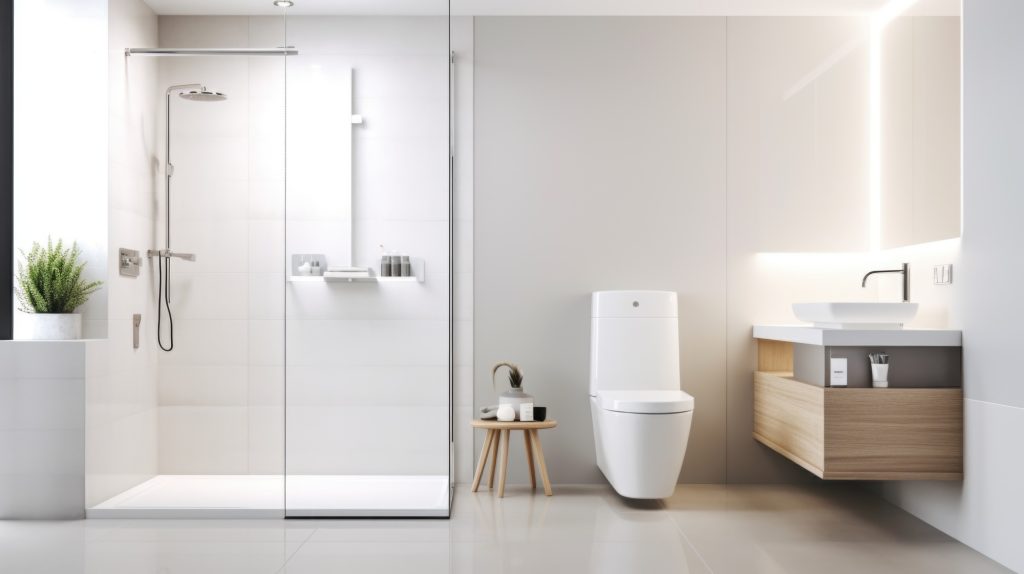Bathrooms blend utility with comfort, functioning as essential spaces for daily routines and private havens for relaxation and personal care. However, without proper upkeep, these retreats can quickly devolve into sources of stress and costly repairs. Bathroom leaks can cause damage to walls, floors, and fixtures, so taking proactive steps is essential to prevent such problems.
Understanding the causes of bathroom leaks is a vital initial step toward prevention. Leaks can come from different sources, like a dripping faucet or hidden seepage under tiles. Timely maintenance and vigilance for early signs of trouble can spare you both the inconvenience and the economic burden of extensive repairs.
Continue reading to learn how to protect your bathroom from unwanted leaks and preserve its integrity.
Identify Weak Points And Regular Maintenance
Preventing leaks in your bathroom effectively relies on identifying and addressing areas susceptible to water damage. Establishing a maintenance schedule is essential for keeping these potential trouble spots in check.
Below are some steps to help maintain these critical areas:
- Inspect seals regularly: Worn seals around the bath, shower, and sink are common culprits for leaks. When inspecting, press gently to test for elasticity—if the caulk doesn’t give, it’s time to reseal. Remember, a tight seal is your barrier against water intrusion.
- Examine tile grout: Grout acts as a water-resistant barrier on your tiled surfaces. If you spot any crumbling or discoloration, it’s a sign that moisture might be getting through, and it’s time to reapply grout to fortify these defenses.
- Monitor sink and tub drains: Debris accumulation is more than an inconvenience; it can exert pressure on pipes and joints. After cleaning, run water to ensure it flows freely, indicating clear, unobstructed pathways.
Maintaining vigilance with these aspects of your bathroom can prevent the inconvenience and cost of unexpected leaks. Regular, proactive checks are the key to early detection and intervention, keeping your sanctuary secure and dry.
Upgrade To Water-Resistant Materials
Ensuring your bathroom can effectively repel water begins with the right materials. Over time, constant exposure to moisture can degrade many of the traditional materials used in bathroom construction.
Below are some upgrades to consider for enhancing water resistance:
- Install non-porous tiles: Opt for porcelain or glazed tiles, which have a water absorption rate of less than 0.5 percent, making them highly resistant to moisture penetration.
- Use waterproof grout: There are new grout formulas available that include latex or silicone additives, offering better adhesion and creating a waterproof barrier once cured.
- Select solid surface countertops: Materials like quartz are non-porous and resist staining, making them ideal for the humid bathroom environment.
By making these upgrades, you can fortify your bathroom against the pervasive water damage issue. This not only offers peace of mind but also improves the functionality and aesthetic appeal of the space. Regular assessments combined with these smarter material choices can drastically reduce the likelihood of future leaks.
Conduct Routine Plumbing Assessments
Vigilance in plumbing maintenance is a cornerstone of preserving your bathroom’s functionality. A comprehensive examination of your bathroom’s plumbing system can uncover potential problems before they become significant concerns.
Below are essential steps for a comprehensive plumbing inspection:
- Assess pipe conditions: Look for signs of wear on visible piping, such as flaking, stains, or dampness, which could indicate corrosion or slow leaks.
- Check faucets and showerheads: Tighten connections and seals on these fixtures, as even minor drips can lead to significant water loss over time.
- Evaluate toilet stability: Ensure the toilet does not rock or shift, as any movement can compromise the seal and lead to leaks.
Performing these inspections semi-annually, or if there are signs of system changes, helps maintain the integrity of your bathroom’s plumbing. Taking proactive measures like these prevents minor issues from escalating into major and costly problems.
Cultivate Leak-Preventing Behaviors
The daily use and habits of those who frequent the bathroom can have a significant impact on the likelihood of leaks developing. Cultivating awareness and slightly modifying user habits can be a highly effective form of prevention.
Consider adopting the following practices:
- Manage drain care: Avoid flushing anything down the toilet that isn’t waste or toilet paper, and use hair catchers in showers to prevent clogs, which can lead to pipe stress and leaks.
- Moderate water usage: Prolonged, excessive water use can strain pipes and fixtures. Shorter showers and turning off the tap while brushing your teeth can help.
- Avoid harsh chemicals: Cleaning agents with corrosive properties can cause damage to your plumbing system over time. It’s advisable to choose gentler, eco-friendly cleaning products that can keep your spaces clean without causing wear and tear.
Incorporating these habits into your routine encourages a bathroom environment less prone to the wear and tear that can cause leaks. Consistency in these practices can prevent many common leak issues, preserving the bathroom’s condition and functionality.
Conclusion
In safeguarding your bathroom against leaks, proactive measures are your best defense. From upgrading to water-resistant materials to refining daily habits, each step fortifies your bathroom’s resilience. Regular maintenance and mindful usage can save you from the hassle and expense of unforeseen repairs. Protect your peaceful retreat by applying these preventative strategies today, and ensure your bathroom remains a haven of relaxation, not a source of worry.







